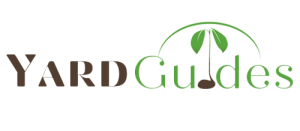Cedar for raised Garden Beds is a popular choice, but how does it compare to other materials? Choosing the right material for your garden beds can be a daunting task.
This article will explore the benefits and drawbacks of cedar versus other options. We’ll look at factors like durability, cost, and environmental impact.
Cedar is known for its natural resistance to rot and insects. This makes it a durable option for garden beds.
But cedar isn’t the only choice. Other materials like pressure-treated wood, composite, and metal also have their merits.
Understanding these differences can help you make an informed decision. Whether you’re a DIY enthusiast or a seasoned gardener, this guide is for you.
Let’s dive into the world of garden beds and discover what material suits your needs best.

Why Choose Raised Garden Beds?
Raised garden beds offer several advantages over traditional garden plots. They make gardening more accessible and easier to manage.
Firstly, they improve soil drainage and structure. This leads to healthier plants and better yields. Raised beds also help prevent soil compaction.
Another advantage is reduced weed growth. With raised beds, you can easily spot and remove weeds. This helps keep your garden neat and healthy.
Lastly, raised beds are versatile. They can be adapted to any garden size or shape. You can customize them with various designs, such as:
- Tiered levels for different plants
- Built-in trellises for climbing species
- Seating areas for convenience
Choosing raised garden beds can transform your gardening experience. This approach accommodates both large and small spaces alike.

Cedar for Raised Garden Beds: Key Benefits
Cedar is a popular choice for constructing raised garden beds. Its natural properties offer several advantages for gardeners.
Firstly, cedar is naturally resistant to rot and insects. This durability means fewer replacements over time, saving money and effort.
Cedar wood contains natural oils that prolong its lifespan. These oils help the wood resist decay, preserving structural integrity.
Many appreciate cedar’s pleasant aroma and appearance. It adds aesthetic value to any garden, blending with various styles.
Moreover, cedar’s thermal properties are advantageous. The wood helps regulate soil temperature, promoting plant health. This property aids in both cooler and warmer climates.
Cedar is also lightweight, yet strong. This makes it easy to work with, especially for DIY enthusiasts. Building a cedar raised garden bed involves basic tools and skills.
Here’s why cedar is favored by many gardeners:
- Naturally resists pests without chemicals
- Supports organic gardening with less maintenance
- Sustainable and often responsibly sourced
Cedar’s eco-friendly attributes are commendable. It’s biodegradable with a lower carbon footprint compared to synthetic materials. This makes cedar an ideal choice for those aiming for a more sustainable lifestyle.
Additionally, cedar boards come in various sizes and thicknesses. This allows for flexibility in designing custom garden beds.
Incorporating cedar into your garden doesn’t only benefit plant growth. It also enhances overall garden aesthetics and durability.


Comparing Cedar to Other Wood Options
When considering wood for raised garden beds, cedar stands out, but other options also have merits. Let’s explore how cedar stacks up against some common alternatives.
Cedar offers natural resistance to pests, which is a major advantage. Unlike cedar, other woods often need chemical treatments.
Many gardeners value cedar’s natural look and pleasant scent. Its aesthetic appeal is hard to rival, enriching garden environments.
Several wood types are used for garden beds. Here’s a brief comparison:
- Cedar: Durable, lightweight, naturally insect-resistant
- Pressure-Treated Wood: Treated for durability, can contain chemicals
- Pine and Fir: Cost-effective, needs treatment for longevity
Considering cedar versus other woods involves weighing costs and benefits. Cedar is typically more expensive but lasts longer.
While cedar is naturally durable, other woods may need sealants or stains. This involves extra work for gardeners.
Durability is another key factor. Cedar’s resistance to warping and weathering offers long-term investment benefits.

Pressure-Treated Wood
Pressure-treated wood is a common alternative to cedar. It’s chemically treated to resist insects and rot, extending its lifespan.
However, the chemical treatments in this wood raise safety concerns. Chemicals can leach into the soil, affecting plant health.
Gardeners considering this option should weigh the pros and cons. Here’s a summary:
- Pros: Long-lasting, relatively affordable, widely available
- Cons: Potential chemical leaching, less natural appearance
For non-edible plants, pressure-treated wood might be suitable. Yet for growing vegetables, many prefer cedar’s natural properties.
Pine and Fir
Pine and fir woods are also used in garden beds. They are more cost-effective but typically less durable than cedar.
These woods lack natural insect resistance. Therefore, they often require additional treatment or frequent replacement.
Here’s a quick look at their pros and cons:
- Pros: Budget-friendly, easy to find, easy to work with
- Cons: Requires treatment, less durable, may rot faster
Despite their drawbacks, pine and fir can be good for temporary projects. Many DIYers use them for short-term solutions before upgrading to cedar.
Cedar vs. Composite and Plastic Materials
Composite and plastic materials offer an alternative to traditional wood for raised garden beds. These materials are known for their durability.
Unlike natural wood, composite materials resist rot and insect damage without chemical treatments. They offer a low-maintenance solution for gardeners.
Plastic raised garden beds are often lighter and more affordable than other materials. Their durability, however, varies greatly based on quality.
Here’s a comparison highlighting key differences:
- Cedar: Natural, aesthetically pleasing, biodegrades
- Composite: Durable, low-maintenance, can be costly
- Plastic: Lightweight, affordable, less natural look
Composite materials mimic the appearance of wood but lack its natural beauty. They don’t have the warm, rich tones that cedar provides.
Plastic materials can clash with natural landscapes, offering less aesthetic appeal than cedar. However, their colors and styles vary widely.
For those focusing on eco-friendliness, cedar’s biodegradability is a plus. Composite and plastic may have negative environmental impacts upon disposal.
Choosing between these materials involves evaluating their fit for your garden. Cedar remains a popular choice for those seeking a balance of aesthetics and durability.

Cedar vs. Metal and Stone Raised Garden Beds
Metal and stone are popular materials for raised garden beds, each offering unique benefits. These options appeal to those seeking a modern aesthetic.
Metal raised garden beds, often made from steel or aluminum, provide a sleek and contemporary look. They are sturdy and resistant to weather effects.
One downside to metal is its tendency to heat up in the sun. This can affect soil temperature and plant health negatively.
Stone raised garden beds are known for their classic appeal and solid structure. They withstand weather conditions but can be costly and heavy to install.
Here’s a quick breakdown:
- Cedar: Natural, light, easy to work with
- Metal: Modern, durable, can heat excessively
- Stone: Classic, long-lasting, heavy
Compared to cedar, metal offers longer lifespan with less care. However, it may lack the warmth and inviting nature of wood.
Stone, while robust and timeless, demands significant effort for setup. Cedar’s lightweight nature makes it easier for DIY projects.
Your material choice should reflect garden style and environmental conditions. Cedar offers a harmonious blend of beauty and ease.

Cost Comparison: Cedar and Alternatives
When planning a garden, considering cost is crucial. Cedar tends to be more expensive than other materials, reflecting its quality and longevity.
The initial investment in cedar boards for raised garden beds can pay off over time. Its durability means fewer replacements and less upkeep.
Here’s how cedar compares to alternatives:
- Cedar: Higher upfront cost, long-lasting, aesthetic appeal
- Pressure-Treated Wood: Less expensive, potential chemical risks
- Composite Materials: Costly but low-maintenance and durable
- Metal: Moderately priced, durable, heats up in sun
Cedar raised garden bed kits offer convenience but often come with a higher price. These kits streamline the installation process, saving time for DIY enthusiasts.
Balancing cost with benefits, cedar proves a worthwhile choice for long-term garden projects. Its environmental benefits also add value.

Durability and Maintenance: What to Expect
Cedar is renowned for its resilience and longevity. Its natural oils make it resistant to rot and pests.
This advantage reduces the need for chemical treatments, making maintenance straightforward. Cedar raised garden beds require minimal upkeep compared to other materials.
The durability of cedar ensures its appeal remains intact over years:
- Minimal Maintenance: Occasional cleaning
- Long-Lasting: Natural decay resistance
- Stable Structure: Less warping over time
Unlike metals that may rust, cedar withstands harsh conditions with little structural compromise. This characteristic makes cedar a favored choice for regions with harsh climates.
In addition, cedar’s ability to age gracefully adds character to gardens. This aging process naturally enhances any landscape over time.

Safety and Environmental Impact
Cedar is often chosen for its excellent safety profile. Its natural oils deter pests without the need for chemicals, promoting a healthier garden environment.
This quality makes cedar ideal for organic gardening practices. Moreover, cedar wood is typically untreated, ensuring a chemical-free growing area.
In terms of environmental benefits, cedar shines. It’s a renewable resource often sourced sustainably, reducing its carbon footprint.
Key points include:
- Chemical-Free: Safe for edibles
- Biodegradable: Eco-friendly material
- Renewable Resource: Supports sustainable practices
Choosing cedar supports eco-conscious gardening. Unlike some alternatives, cedar doesn’t leach harmful substances into the soil.
Thus, by opting for cedar, you contribute positively to environmental conservation. It’s a choice that aligns functionality with environmental responsibility.

DIY Cedar Raised Garden Beds: Tips and Ideas
Building your cedar raised garden bed is a rewarding project. Cedar is lightweight, making it easy to handle for most DIY enthusiasts.
Start by planning the size and shape of your garden bed. Custom sizes allow you to optimize your garden space effectively.
Gather all necessary materials, such as cedar boards, screws, and a drill. Ensure you have the correct tools to streamline the construction process.
Here are some helpful tips for your DIY project:
- Pre-Cut Boards: Simplifies assembly
- Seal Cedar: Extends life and enhances color
- Level Ground: Ensures stability
When constructing, consider incorporating features like trellises or seating. Such additions enhance functionality and aesthetics.
Remember, thoughtful planning and execution lead to a practical and beautiful garden bed. Enjoy the process and the results.

Choosing the Right Material for Your Garden
Selecting the best material for your garden beds depends on several factors. Each material offers unique benefits and drawbacks.
Consider your budget, the local climate, and garden space. These elements impact the longevity and performance of garden beds.
Evaluate personal preferences and environmental concerns. Some may prefer eco-friendly materials or those with minimal maintenance needs.
Here’s a quick guide to aid your decision:
- Budget: Cedar might be pricier, but it’s durable.
- Climate: Metal can heat up in the sun.
- Maintenance: Composite needs less upkeep than wood.
Taking these factors into account ensures your choice aligns with your gardening goals. This thoughtful consideration leads to successful, flourishing gardens.
Conclusion: Is Cedar the Best Choice?
Cedar holds several advantages over other materials for garden beds. Its natural resistance to rot and insects makes it a durable and low-maintenance option.
While cedar may involve a higher initial cost, its longevity offers long-term value. Additionally, its eco-friendly attributes appeal to many garden enthusiasts.
Ultimately, the ideal choice depends on personal priorities, whether it’s budget, aesthetics, or sustainability. Cedar stands out for those seeking a balance of durability and natural beauty in their garden beds.

